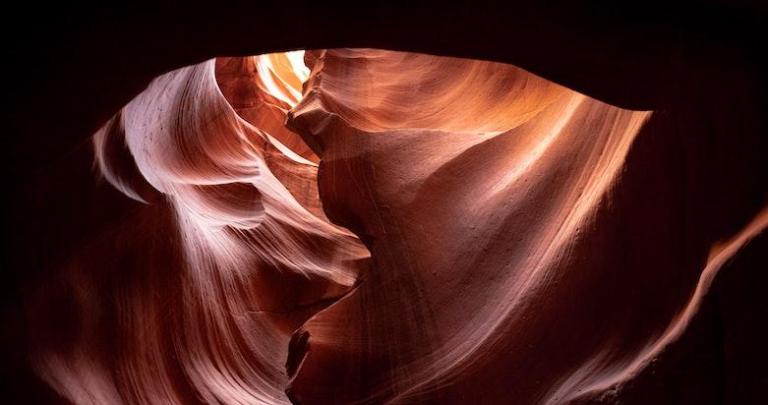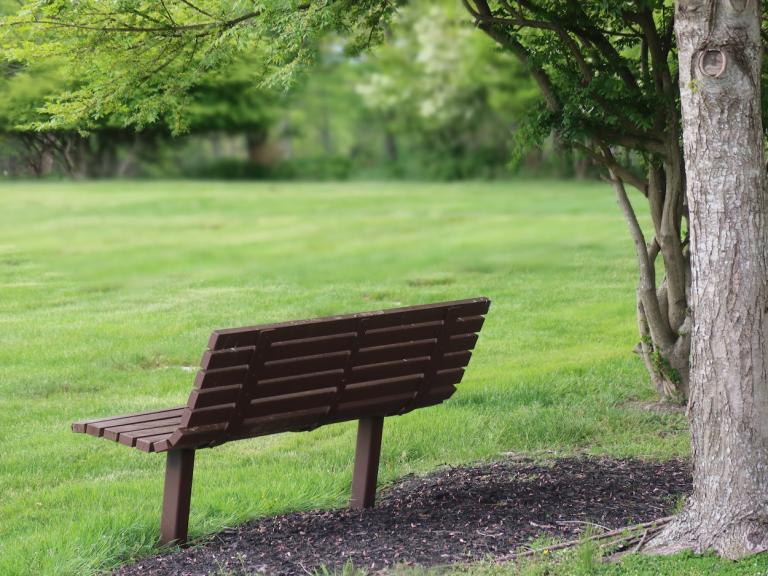
This is part two of my short series on Teresa of Ávila. You can read the first post here or check out my post, 24 Wisdom Teachers Who Have Changed My Life.
The Third Dwelling of our Soul
The reality is, our 21st century society doesn’t respect the work of the first two dwellings of the soul.
The engagement of one’s inner life so often looks as if it has no byproduct, no criteria for success. In a culture of being faster, stronger and doing more and more, the work of the first two dwellings is largely about becoming slower, more intentional, and taking time for ourselves in order to recognize and become acquainted with our reptiles as well as the call of the Divine.
Teresa says we do this through prayer, and I would expand on her understanding of prayer to include walking, gardening, hiking, reading; prayer is anything that opens us up to the Spirit in the present moment.
Because this work is largely internal and not behavioral (and therefore largely invisible and uncontrollable by outside forces), few pastors/priests were taught in Christian history to emphasize it, instead being trained in intellectual theologies, doctrines, and the creation and enforcement of behavioral-modification plans.
Even the very language of the inner journey (words and phrases like contemplation, dark night of the soul, soul-work, etc.) has largely been removed from mainstream Christian life over the past thousand years. (A great hope in our secular culture is the turn toward the Buddhist practice of mindfulness and the birth of a new language centered around self-care and self-love, concepts that would not have been publicly acceptable to speak of fifty years ago.)
And yet here, between the second and third dwellings, the work of the inner life, of the first two dwellings, begin to bear outer fruit that cannot be ignored. The internal begins to overflow into the behavioral for all to see.
In the third dwelling of our soul, the humility and self-knowledge we’ve been developing internally begin to show themselves in our daily interactions and the language we choose to use.
- When a sibling begins to yell and shout about a friend’s betrayal, we can stay calm and respond to them in a productive way without being sucked into their tornado.
- When a car cuts us off while we’re driving, we can now pause and breathe, letting go of our own need for control, slowing down our own tornado as it attempts to grow up from within.
Our capacity for holistic seeing (seeing the whole river instead of just the individual rapids) has expanded and now allows us to call upon our inner wisdom, not just our immediate reaction. We are slowly becoming faithful questioners and social poets.
In essence, when we move within this third dwelling of our soul, we are in a new pilgrimage of faith: letting go of the protective walls we’ve built up around us (our likes and dislikes, identities we’ve clung to in the past, the words we use to describe ourselves, etc.) and instead traveling into a wilderness of the unknown.
We are in the process of letting our inner work transform us, which always leads to the letting go of things we once held dear, positions we may have taken on a variety of issues, and many of the very things that best defined us within society.
An example of this was St. Francis, who, having experienced a major inner transformation, gave up his very wealth (including status, safety, and a guaranteed social circle) in order to follow his understanding of God’s call in his life. Teresa writes, “Let’s abandon our fear and reason into God’s hands. Forget about the weakness in our nature that we worry about so much.”
Which is why the third dwelling absolutely sucks.
As our presence and the way we show up in the world begins to change, so too does the world’s reaction to us. We may experience the departure of friends we once held dear or we may become praised for our new sense of being (“you are just so wonderful!”), both of which make direct impact with our ego.
As our actions become recognized by others, we may be tempted by the seductive reptiles of our ego or at times the reptiles will bite at us firmer than ever before, causing us to stumble. This great test of our humility and devotion to the Divine’s call for us has the power to bog us down if we remain tethered to our own self-satisfaction.
And possibly worse, in the midst of all of this, it is also here in the third dwelling that we may experience a dryness in our spiritual life. The things that once opened ourselves up now might seem like total wastes of time. The silent prayer sit becomes monotonous, filled only with the agitated shifting of our bodies attempting to get us to more productive things. The monkeys jumping around in our heads will begin to barrage us with provoking questions like, “why do we pause to pray when we could be out changing the world?”
The only way deeper into the castle of our soul is to embrace such inner dryness and respond to the outer praises and sufferings with even greater humility and self-knowledge, questioning each thought, ego-seduction, and ego-hit with, “it is what it is and how can I be present with it in a loving way?”
Teresa writes:
“If we practice humility, this stage is a most excellent one. If not, we may waste our whole lives here, suffering a thousand miseries. Unless we abandon ourselves, this state is arduous and burdensome. We would be trudging under the load of our egos, like mud clinging to our boots and dragging us down. Those who reach the ultimate dwelling bear no such baggage.”
If you’re interested in exploring Teresa’s teachings and how they might guide you in your own story, I’ll be hosting an evening of journaling based on her teachings in March. Sign up here for more information!
The Fourth Dwelling of our Soul
Remember: if you want to make progress on the path and ascend to the places you have longed for, the important thing is not to think much but to love much. – Teresa of Ávila
Before we discuss the fourth dwelling of the soul, a word of clarification: our movement deeper into our inner life will not feel like an ascension. It will feel much more like a descent, with us moving downward, lower and lower, through our hearts and into the very core of our being.
It is likely to feel less like Jacob’s Ladder and more like crawling into the Lion’s Den; but it is there in the den that angels await us.
Richard Rohr’s book, Falling Upward (affiliate link!), details this movement powerfully and even the title of his book gives us language for the path of spiritual descent. As we journey deeper into our interior castle, we are indeed falling upward.
In addition, it is wise to remember this is not a linear journey. We are constantly moving in and out of our dwellings, deepening into one just to venture back out again. We may have a taste of the third dwelling with our inner life overflowing into beautifully compassionate behavior, just to spend the next three months sitting in our first dwelling again, cranky as always, staring moodily at each of our reptiles’ faces. (Full disclosure: this is more or less what I’m feeling right now.)
As any wise elder will tell you, wisdom is embraced more through this “failing” and falling down than through our successes. It is unfortunately the same with the spiritual journey. The name of the game is to include and transcend. We move deeper and deeper in our spiritual journey by including more experiences of love lost, daily struggle, falling down and learning to get back up again.
And so here in the fourth dwelling, we enter into a room that is unlike anything we have ever experienced before.
Up until now, we have consciously initiated actions that have led us toward the Divine: we have engaged a consistent practice of prayer, worked to calm our thoughts, to recognize and accept the existence of reptiles that slither along with us. But now, here in the fourth dwelling, That Which is Bigger Than Us makes itself clearly known; the Divine becomes the Great Initiator, calling for us from the innermost recesses of our hearts, beckoning us further in.
We enter into what Teresa’s translator, Mirabai Starr, refers to as the “heart cave,” where we feel so surrounded by love that it floods into and through our bodies, warming us to our core. This is a mystical experience. Across all religious traditions, this mystical experience has been documented; the Divine brings us deeply into a state of absolute awe and wonder, where we can’t help but simply sit in the beauty of the moment.
In this state, we receive an experience that Teresa calls the Prayer of the Quiet. She describes it using this analogy:
There are two fountains and they each have a basin to be filled with water. These two basins fill up in different ways. Water from one comes from far away, carried through many aqueducts requiring much ingenuity.
The source of water for the other one is right beside it and the basin fills soundlessly. The spring is abundant and so the basin spills over and a large stream flows from it. This requires no engineering skills or the construction of conduits. The water just continuously bubbles forth.
In other words, the water that comes through the aqueducts is like spiritual insights in meditation. We think and reflect with focused prayer, meditating on the world around us until finally, through (mostly) our own efforts, comforting feelings come splashing in, making noise as they fill up the basin.
With the other fountain, the water springs directly from its own source: God or the Divine, whatever you want to call it. It is this experience of being quietly overwhelmed by the goodness of the Divine, overflowing itself in us and through us. The Divine’s presence brings delight and the greatest peace, quietude, and sweetness to our innermost selves.
In this mystical experience, this Prayer of the Quiet or heart cave, spiritual water flows through us, expanding our inner being and flooding us in love. It is entirely initiated by That Which is Bigger Than Us; our systems of meritocracy, privilege, self-serving seeking have no part to play but to lay down and let go. Indeed, Teresa writes that we won’t even understand what is happening.
“She senses a certain fragrance, we could say, as if within the depths of her being there were burning coals sprinkled with sweet perfumes. We cannot see the light or locate the source of the fire, but the sweet-smelling warmth permeates the whole of the soul and maybe even spreads into the body.”
The fourth dwelling is therefore a space of loving and wonderful transition between the first three dwellings of conscious effort (the work of intention, dedication, and letting go) and the final three dwellings where the Divine takes over.
Continue reading Part 3: “Teresa of Ávila and the Fruits of the Spiritual Journey: Activist in Nature”













